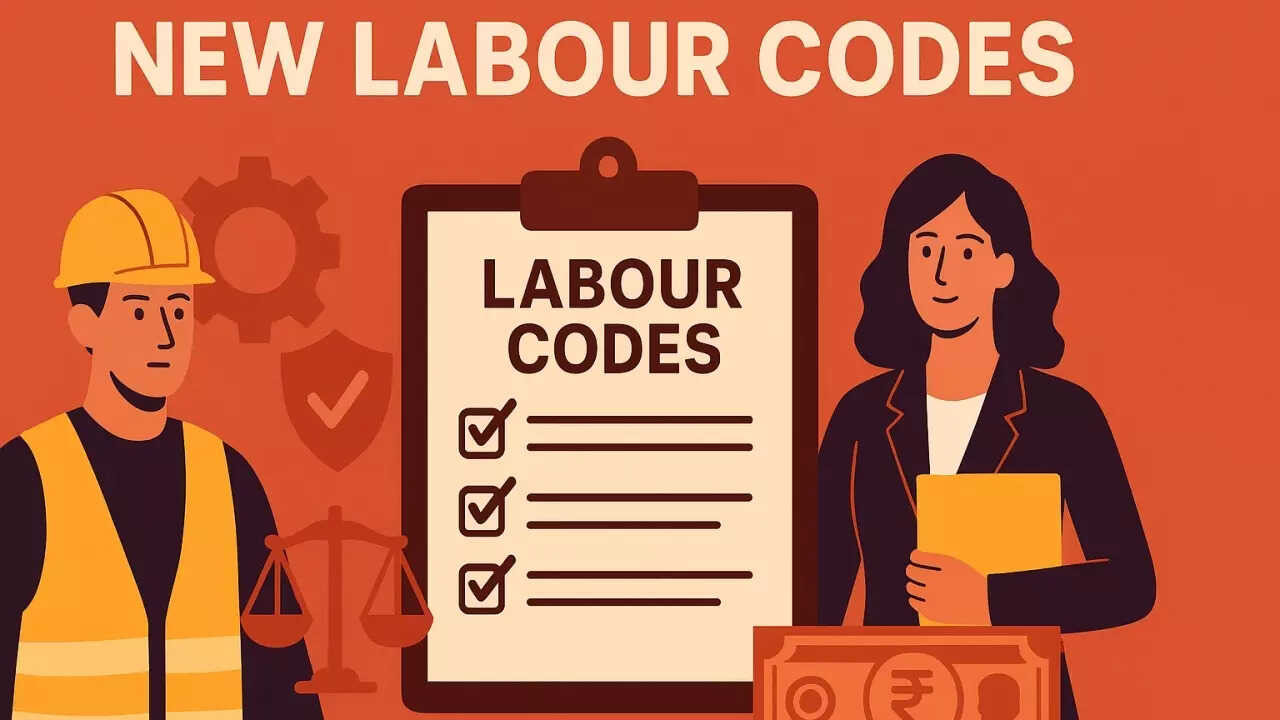India’s new labour codes, effective November 21, 2025, consolidate 29 laws, promising universal minimum wages, enhanced social security for gig workers, and improved safety. While offering businesses flexibility, they also introduce new classifications for employees and workers, impacting benefits and contract labour. Employers must adapt HR and payroll to these significant changes.
Decoding India’s New Labour Laws: What’s Changing for You?
For years, India’s labour laws have been a complex web, a mix of outdated regulations struggling to keep pace with the evolving world of work. Now, things are poised for a major shake-up. The government is introducing four new labour codes, aiming to consolidate and streamline existing legislation. But what do these changes really mean for you, whether you’re an employee diligently climbing the corporate ladder or an employer navigating the challenges of running a business? Let’s dive in and unpack the key changes.
The Quest for Fair Wages: Setting a Floor for Pay
One of the most significant aspects of the new labour codes revolves around minimum wages. The goal? To establish a universal floor wage across the country. This ensures a basic safety net for all workers, regardless of where they live or the industry they’re in. States will still have the flexibility to set wages above this floor, taking into account local economic conditions and cost of living. This represents a significant shift towards reducing wage disparities and ensuring fair compensation for everyone.

The codes also emphasize timely payment of wages. Think of it as a statutory guarantee that your hard-earned money will reach you when it’s supposed to, bringing much-needed financial security and peace of mind.
Gratuity: Reaching More Hands, Sooner
Gratuity, the lump sum payment given to employees upon retirement or resignation after a certain period of service, is also getting a revamp. Currently, an employee needs to have completed five years of continuous service to be eligible for gratuity. The new codes propose reducing this to just one year for certain categories of workers, including fixed-term employees. This is a huge win for employees in sectors with high attrition rates or those engaged in short-term contracts. It means more people will have access to this important financial benefit.
Formalizing Employment: The Right to a Written Contract
Imagine starting a new job without a clear understanding of your role, responsibilities, or terms of employment. The new codes aim to eliminate this uncertainty by making appointment letters mandatory for all employees. A written contract outlines everything from your job title and responsibilities to your salary, benefits, and working hours, ensuring transparency and accountability from the get-go.
Layoff Rules: Balancing Employer Needs with Employee Protection
Layoffs are never easy, but the new labour codes aim to create a more structured and transparent process. While they do provide employers with some flexibility in restructuring their workforce, they also include provisions for fair compensation and notice periods for laid-off employees. The specific rules regarding layoffs depend on the size of the company. Establishments with fewer than 300 workers may have more flexibility, while those with a larger workforce will be subject to stricter regulations and government approvals. The intention is to balance the needs of businesses to adapt to changing market conditions with the need to protect employees from arbitrary job losses.
Fixed-Term Employment: A Legitimate Option
The new labour codes formally recognize fixed-term employment, allowing companies to hire workers for specific projects or periods. This provides businesses with greater flexibility in managing their workforce and allows them to scale up or down quickly in response to changing demands. Crucially, the codes stipulate that fixed-term employees are entitled to the same benefits and conditions of service as permanent employees, ensuring fair treatment and preventing exploitation.
Streamlining Labour Laws: A Simpler, More Efficient System
Beyond these specific changes, the broader aim of the new labour codes is to simplify and consolidate the existing complex web of regulations. By reducing the number of laws and creating a more coherent framework, the government hopes to reduce compliance costs for businesses, encourage investment, and promote job creation. A simpler, more transparent system also makes it easier for employees to understand their rights and for employers to fulfill their obligations. (See also: our explainer on [understanding employee benefits](internal-link.com)).
Navigating these new labour codes will require a period of adjustment for both employers and employees. Understanding the changes, seeking clarification where needed, and adapting policies and practices accordingly will be crucial for ensuring a smooth transition. By creating a more modern and flexible labour market, the new codes have the potential to boost economic growth, improve worker welfare, and create a more equitable and prosperous India for all.







